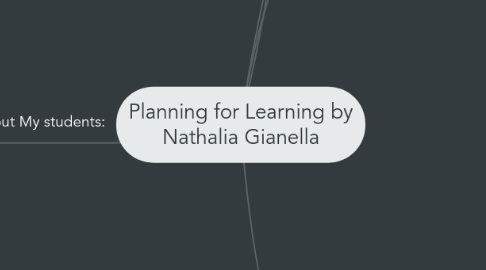
1. STANDARD: 3.1.4.Describe the various types of communities within the city (e.g., Chinatown, Foggy Bottom, Adams Morgan, Anacostia, and Georgetown), beginning with the community in which the elementary school is located
1.1. OBJECTIVE: SWBAT, with at least 85% accuracy, analyze the differences and similarities between two communities in D.C.
1.2. OBJECTIVE: SWBAT, with at least 85% accuracy, identify the location of different communities in D.C. by creating a map using cardinal directions.
2. Key Factors About My students:
2.1. High ELL Population
2.2. Some students with special needs
2.3. Prior Knowledge: Some students may have prior knowledge about D.C. communities and already know how to use cardinal directions
2.4. Visual Learners
3. Subject & Grade: Social Studies/3rd Grade
4. BIG IDEAS:
4.1. Students will understand that every community is unique in appearance and in function. Each community has it's own needs such as schools, hospitals, or libraries.
4.2. Students will understand how to use cardinal directions (north, south, east, and west) when discussing the communities in D.C.
5. Scaffolding Strategies:
5.1. Sentence Starters
5.1.1. Sentence starters are known to be very helpful for ELLs because they help them begin their sentences because often times they struggle on how to start speaking when asked a question; however sentence starters also help native English speakers as well because it can also guide them on how to speak in a manner that has a strong beginning and ending. All students can and do benefit from sentence starters or sentence framers.
5.2. Visuals and Realia
5.2.1. I personally love realia! It really helps all students who are visual learners (most modern day students are visual learners) and ELL students who lack understanding of vocabulary. Realia helps students understand concepts better when they can hold something in their hands. When you bring tangible objects to your classroom, learning becomes more exciting and relatable for students. I love using realia when teaching compare and contrast. I bring in two different kinds of fruit such as an orange and cherry and I use a Venn diagram after students have touched and observed the fruits.
5.3. Modeling
5.3.1. Modeling for students benefit ELLs, students with special needs, and visual learners. Modeling is very helpful to all students when introducing a lesson. Using a Venn diagram, for example, you first model how to use it. Once you've modeled it to your students and have allowed them to work out the graphic organizer through telling you the answers in the Venn diagram, then you can move on to what your objective stated. Modeling helps students to understand HOW to do what you want them to do. Modeling will help students complete the assignment because they have seen their teacher do it, all students worked on it together, and then students individually completed it.
5.4. Graphic Organizers
5.4.1. Graphic organizers are essential for students to learn how to break down information and classify the information. There are hundreds of graphic organizers to choose from, so it's important to find the one that matches the skill that the teacher wants to hone into. Graphic organizers is beneficial for all students because they also are able to write out the information, which also helps them remember the skill that they are learning.
5.5. Small Group
5.5.1. Using small group is beneficial for students who learn better in small groups because they can have the teacher walk them through the steps again. Small groups benefit any student who need remediation, ELLs, and students with special needs.
